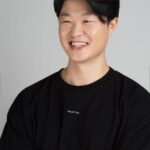
You’ve heard the saying before, time and time again: sleep occupies nearly a third of our lives. From memory formation, concentration to overall wellness, the power of how we spend that 30 percent of our lifespan cannot be underestimated in contributing to our quality of life. However, many of us suffer from sleep-related disorders, ranging from general insomnia during stressful times to more serious sleep disorders like sleep apnea. All of the above have necessitated sleep monitoring solutions and a curiosity about what’s happening to us when we tuck in for a night’s rest.
To date, the gold standard for sleep disorder diagnosis has been the polysomnography (PSG) test, widely used across hospitals and sleep centers around the world. In short, the PSG test measures different physiological changes that occur during our sleeping hours, helping medical staff to better understand how our sleep is affecting our waking lives.
However, the PSG test is rife with limitations that affect its effectiveness in properly diagnosing sleep abnormalities. As a result, sleep experts and technology providers have been exploring new ways to fill the gaps made by the PSG so that we can usher in next-generation technologies that can better detect problems in our sleeping hours before it’s too late.
But first, where is the PSG test missing the mark?
The PSG test has been the gold standard for a long time for a reason – even though it isn’t perfect, it has been a key tool in sleep disorder diagnosis. Its flaws don’t necessarily live within the metrics it’s tracking, but with the way in which the test itself is conducted.
Sleep is an inherently intimate and vulnerable aspect of our lives – with each person needing a different setting, lighting, and ritual to prepare for bed. Herein lies the problem with the PSG test. Typically, the test is made in an unnatural setting, such as a sleep lab or under the glaring lights and noisy environments that are today’s modern hospital. For most, this setting is unsettling and not conducive to the environment we typically find ourselves restful within, resulting in inaccurate PSG readings that can lead to misdiagnosis.
Another cumbersome aspect of the PSG test is patient comfortability. In order to detect brain activity, eye movements, heart rate and vital signs, the patient must be hooked up to numerous electrodes. Again, finding a restful state with so much medical equipment tethered to one’s body can be next to impossible, restrictive and invasive. At best, the test produces inaccurate results and at worst, the conditions in which it is conducted deter the patient from partaking in a PSG at all.

NEMT Partner Guide: Why Payers and Providers Should Choose MediDrive’s TMS
Alan Murray on improving access for medical transportation.
Aside from the potential discomfort of the test setting and equipment, there’s an inherent flaw in the test’s data quality. Patient movement in the night – which can vary greatly from patient to patient – can cause sensor displacement and subsequent artifacts, which can lead to false positives, false negatives or just plain unclear results. In addition, staffing and expertise in the equipment have made PSG tests notoriously expensive, hindering patient accessibility and preventing those who need sleep monitoring from accessing care.
Phase two: Wearable technology emerges, bringing its own set of flaws
To solve some of the flaws of the PSG test, the wearable technology revolution kicked into high gear. Devices such as smartwatches and fitness bands offered the convenience of sleep monitoring in a compact, test-at-home fashion. However, these wearables soon proved to come with their own set of limitations.
Requiring the patient to wear the device throughout the night to gather sleep data, these wearables proved to bring their own problems to the table. Sleeping with a watch or band proved to be just uncomfortable enough for some patients, resulting in inconsistent usage. In addition, many require charging, creating another opportunity for human error to result in lapses in data collection.
While an inarguable step in the right direction, wearables’ reliance on user compliance posed some of the same issues as the traditional, in-hospital PSG test. The subsequent inconsistency in the data again leads to flaws in the accuracy of diagnoses and the overall effectiveness of tailored treatment plans.
Next-generation radar technology sets out to solve historical roadblocks
To bring PSG-level testing to the next generation, the healthcare industry is turning to technology to usher in sleep monitoring that is not only accurate but comfortable and sensitive to patient needs. One such breakthrough technology is round-the-clock radar monitoring, a non-intrusive, privacy-compliant approach that’s set to revolutionize sleep health.
The difference between the traditional electrode-ridden PSG test and cumbersome wearable approaches lies in the hands-off nature of radar monitoring. These systems can be integrated into everyday objects, such as bed frames, bedside tables, and so on, allowing for seamless data collection without bodily contact. In addition, these systems can be installed anywhere, from sleep centers to one’s home, making sleep monitoring fit the patient’s needs in terms of sleep setting.
Why remote sleep monitoring is poised to takeover
The key word in the radar sleep monitoring revolution is “accuracy”. These systems are intelligent enough to track the same sleep factors of the PSG test with no patient contact across breathing rate, heart rate and movement. This non-stop data collection allows for potentially life-saving real-time analysis, while also providing long-term monitoring to detect changes over time. In addition, the machine learning algorithms that power remote sleep monitoring radar systems provide even more accurate readings due to solving the “sensor displacement” problem.
Radar-based nighttime sleep data can bolster the wearable revolution, pairing radar data at night with wearable data collected throughout the patient’s waking hours. This in turn can provide a much more holistic, 24/7 view into how sleep is connected to how we perform throughout the day. The synergy created between the two technologies can then result in much more personalized patient plans and prognoses.
The future of sleep monitoring is comfortable, non-invasive, and accurate
In the past, patient comfort often came at the cost of medical testing. However, the future of sleep monitoring doesn’t have to forgo either, with radar monitoring systems allowing for both a comfortable testing environment and a more accurate reading of sleep health. As this burgeoning industry continues to innovate, we can expect an end to the poking of electrodes and the beginning of testing that fits as seamlessly into our sleep as getting tucked into bed under our favorite blanket.
Photo: franckreporter, Getty Images
Jae-Eun Lee is the Co-CEO of bitsensing, a pioneer in advanced radar solutions with applications across autonomous driving, connected living, smart cities, heath tech, and beyond. Prior to founding bitsensing, he was a Senior Research Engineer at Mando Corporation, a leading global Tier 1 OEM and supplier of automotive components to leading manufacturers such as GM, Ford, BMW, Hyundai, and KIA. During his time there, Jae-Eun was the first in South Korea to develop a 77GHz ADAS radar and lead its mass production of 10 million units, establishing his reputation as a leader in the global automotive-grade radar technology industry. He holds a PhD in Electrical Engineering from Seoul National University and a Master’s degree in Electronic Engineering from POSTECH.
This post appears through the MedCity Influencers program. Anyone can publish their perspective on business and innovation in healthcare on MedCity News through MedCity Influencers. Click here to find out how.









